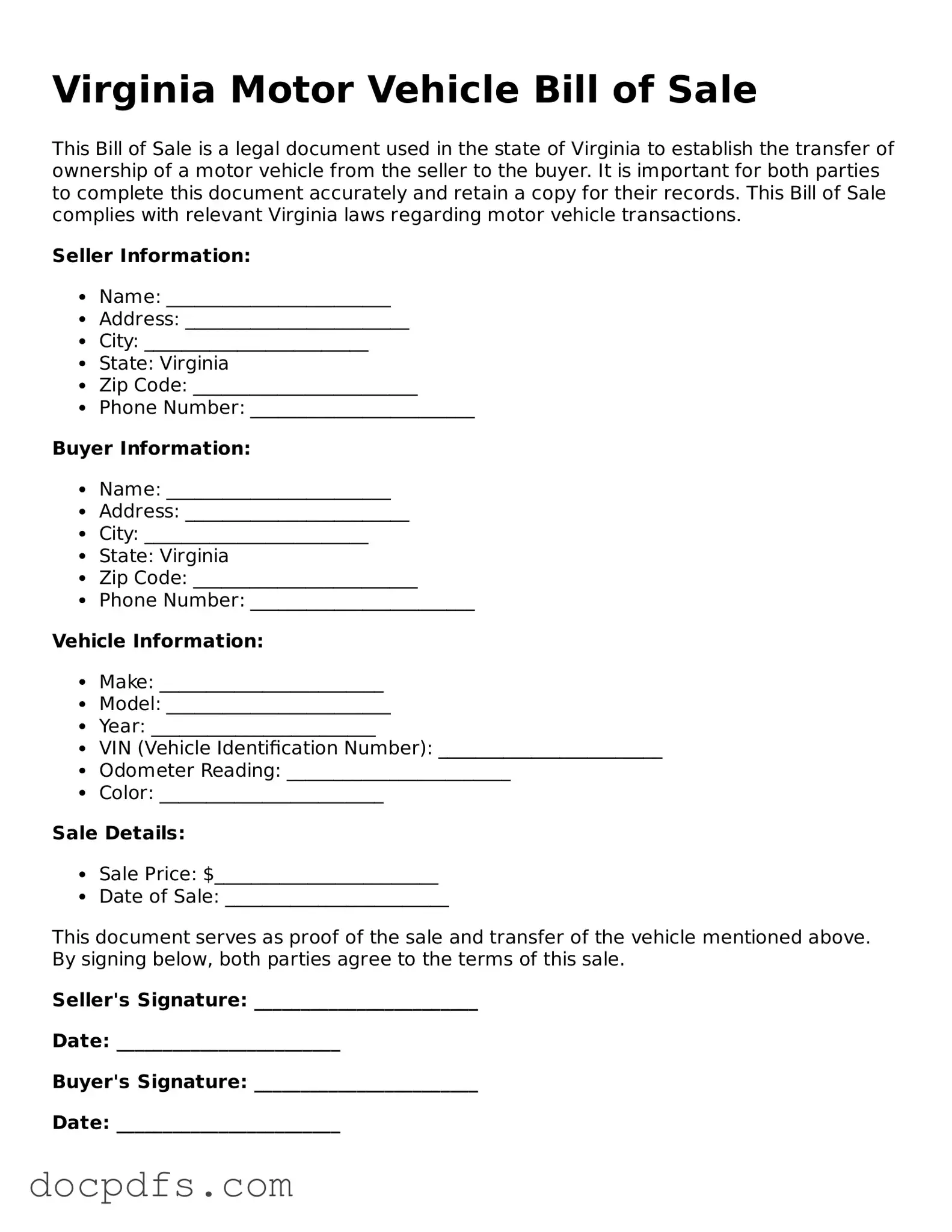Free Virginia Motor Vehicle Bill of Sale Form
The Virginia Motor Vehicle Bill of Sale form is a crucial document that serves as proof of the transfer of ownership for a vehicle in the state of Virginia. This form outlines essential details about the transaction, including the buyer, seller, and vehicle information. Understanding how to properly complete this form can help ensure a smooth transfer process and protect both parties involved.
Open Motor Vehicle Bill of Sale Editor Now
